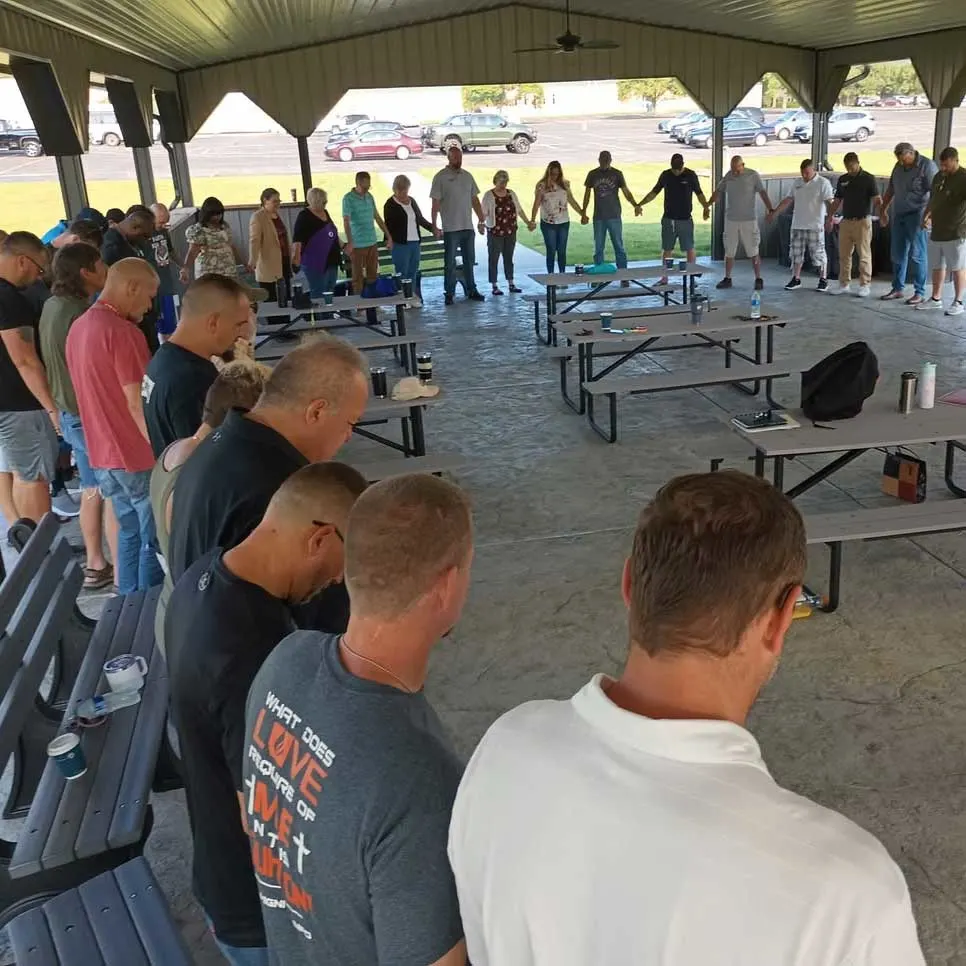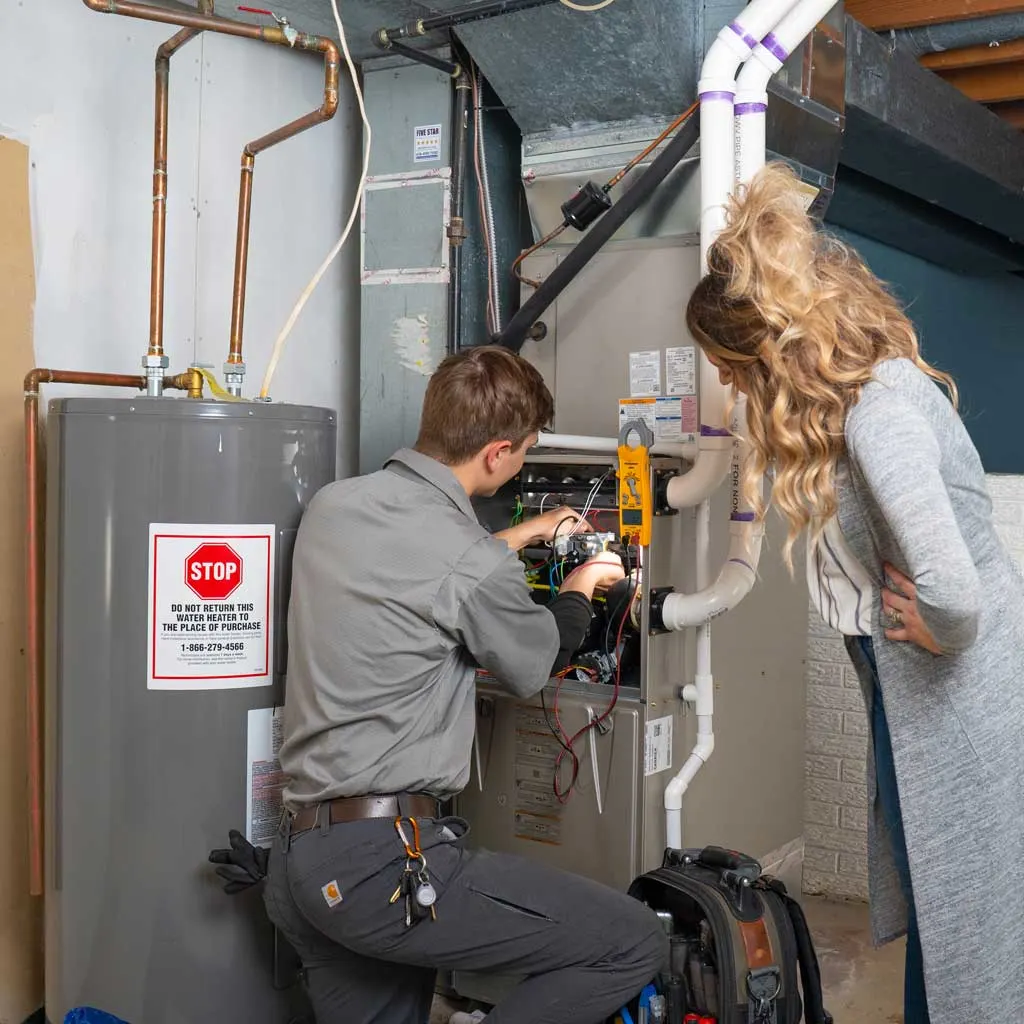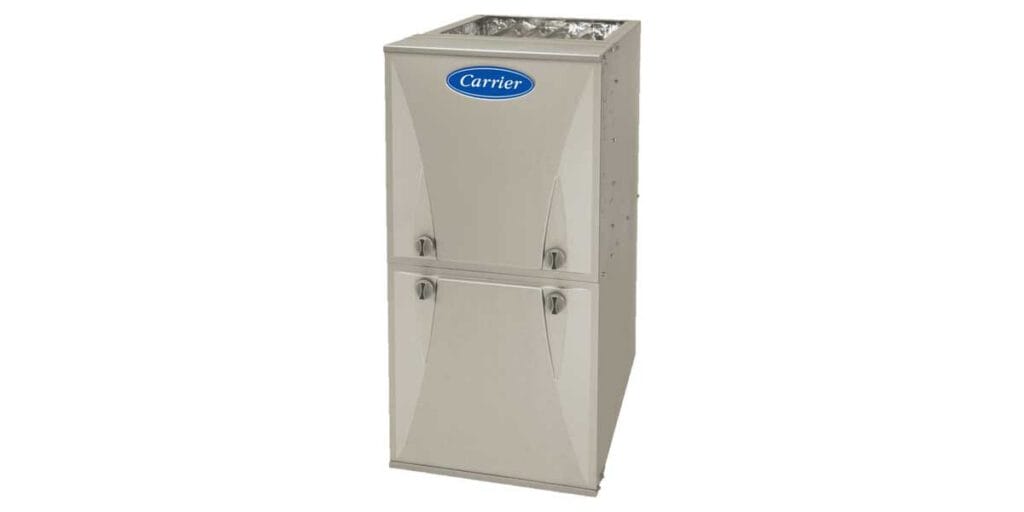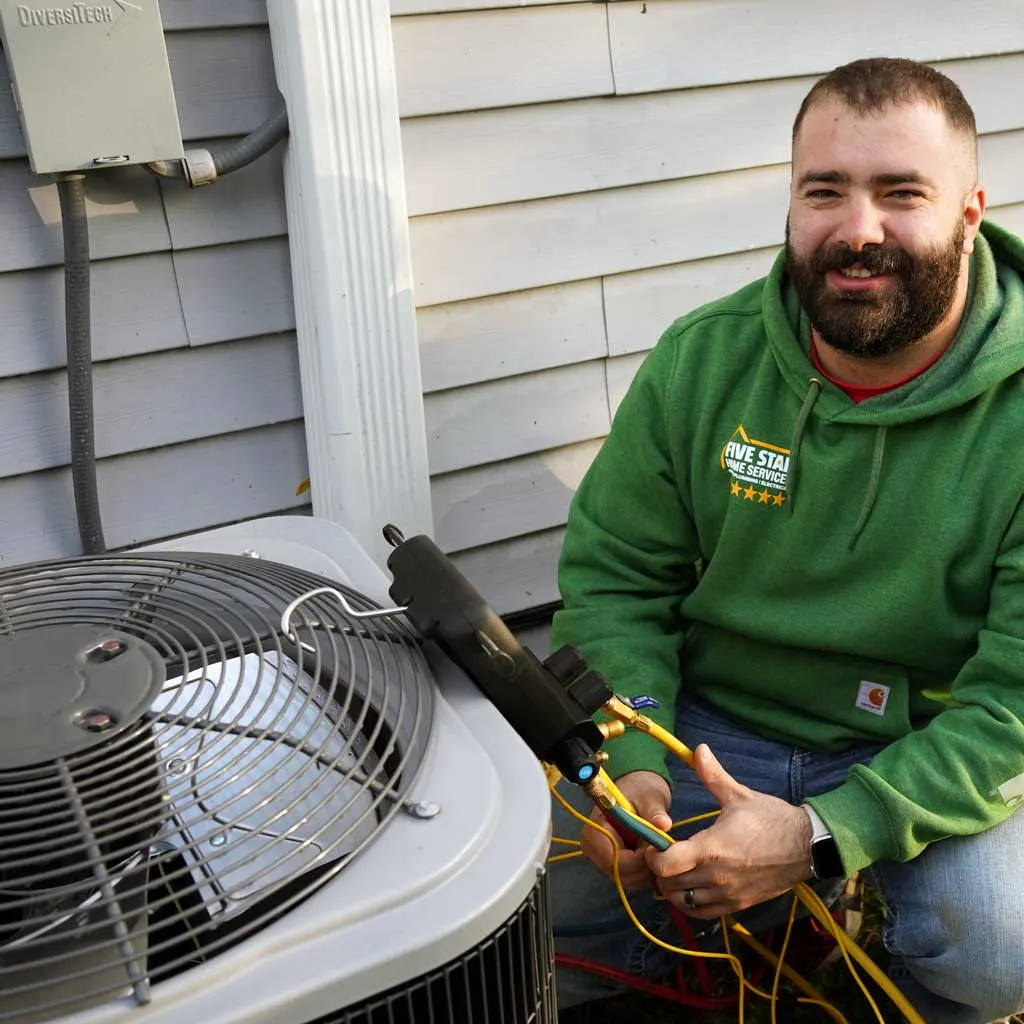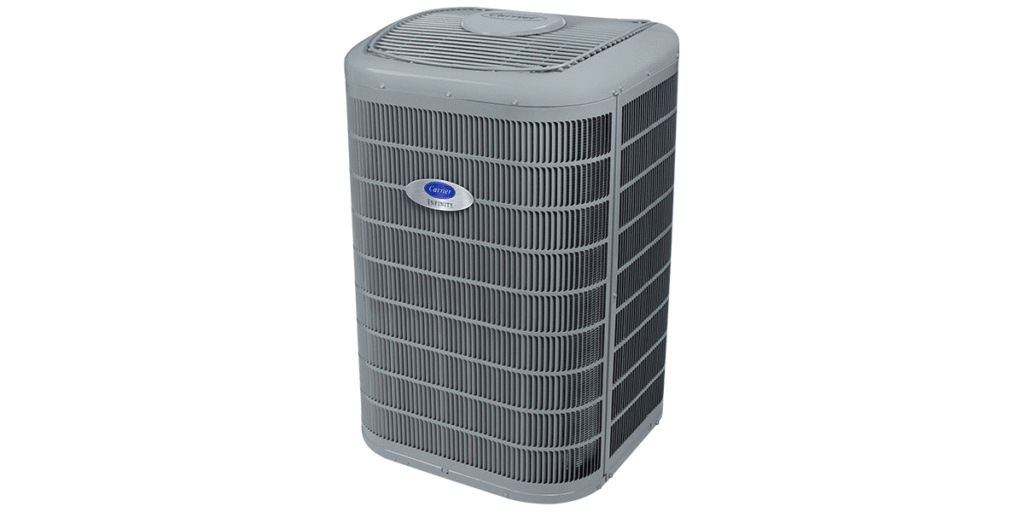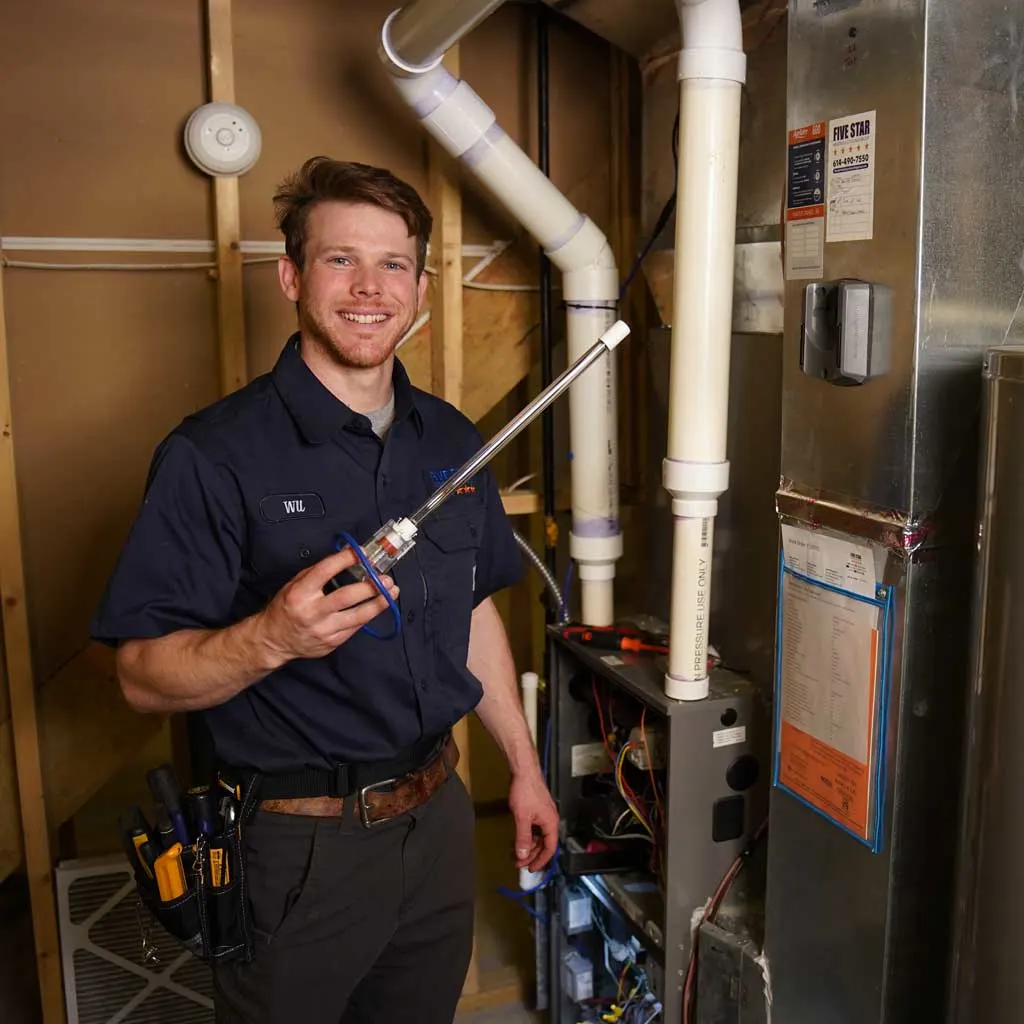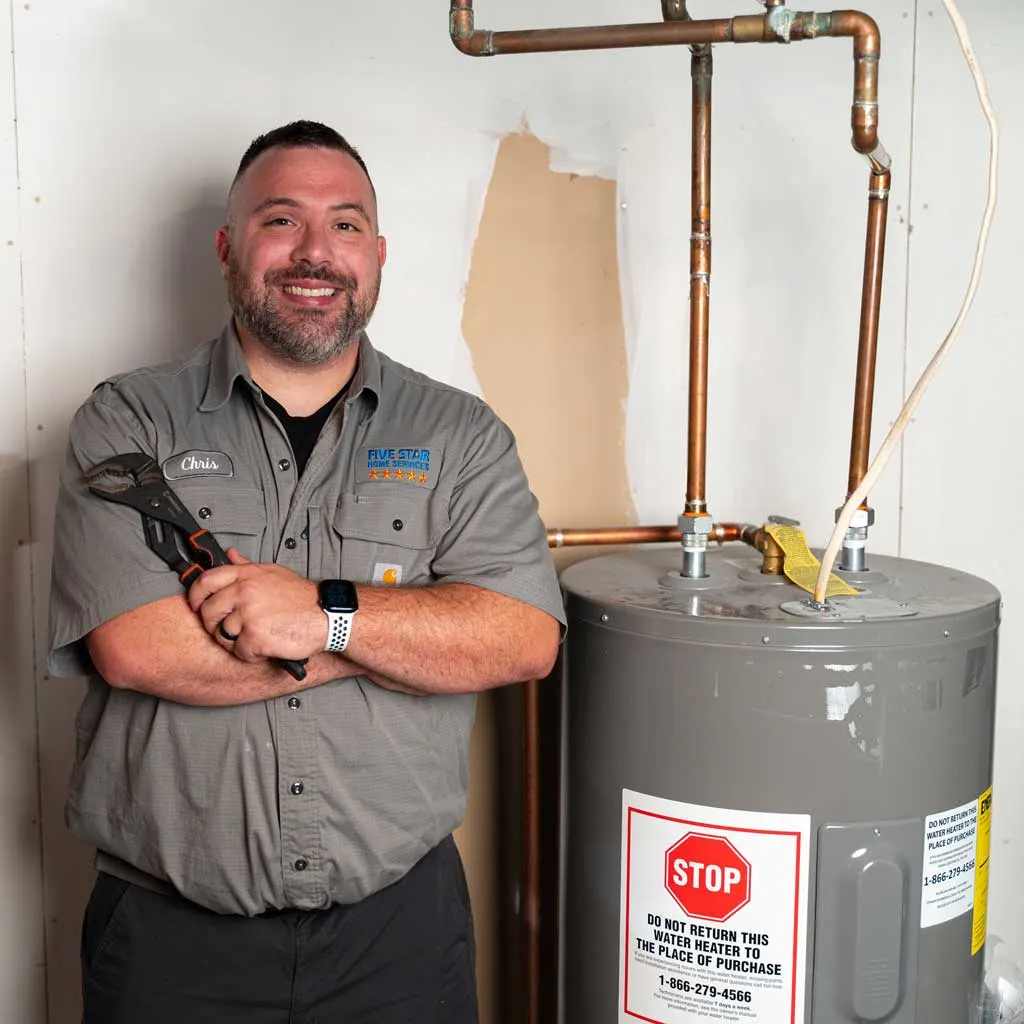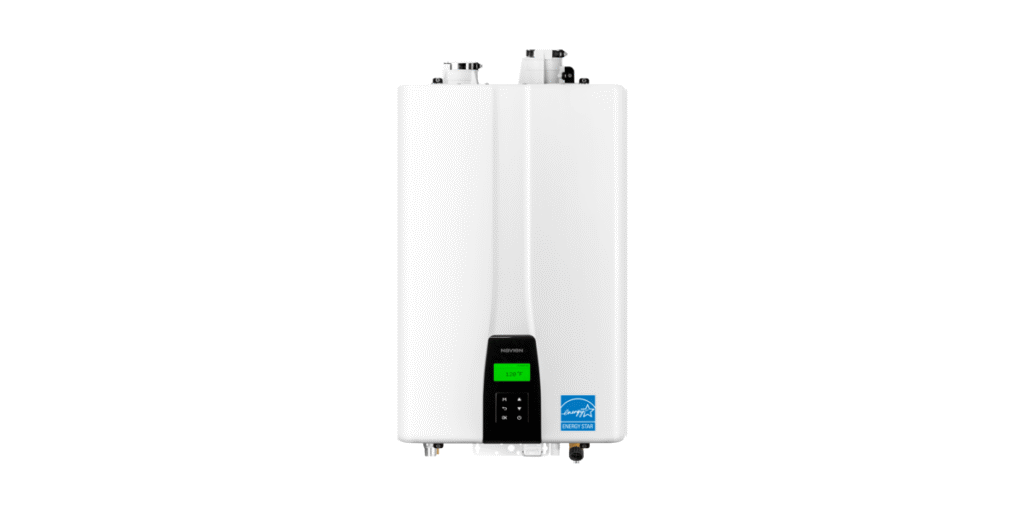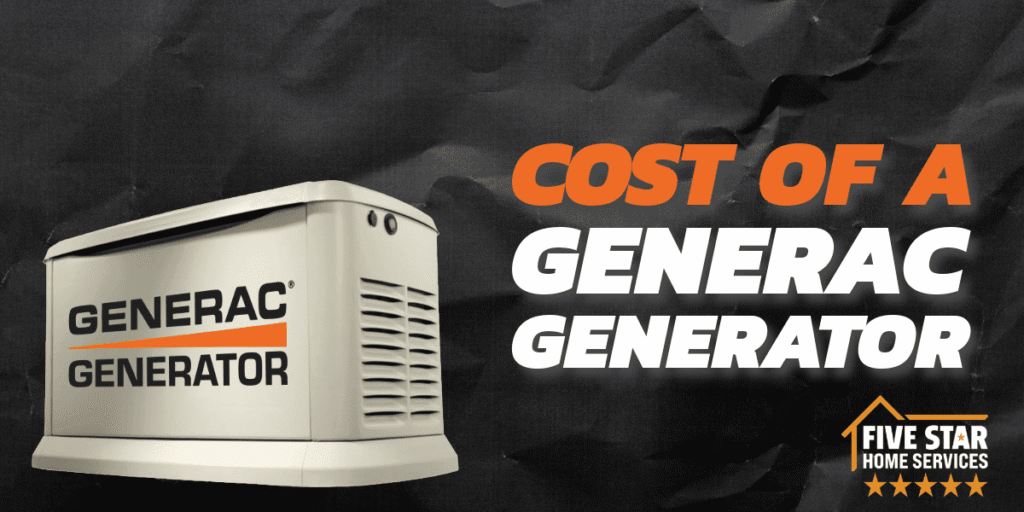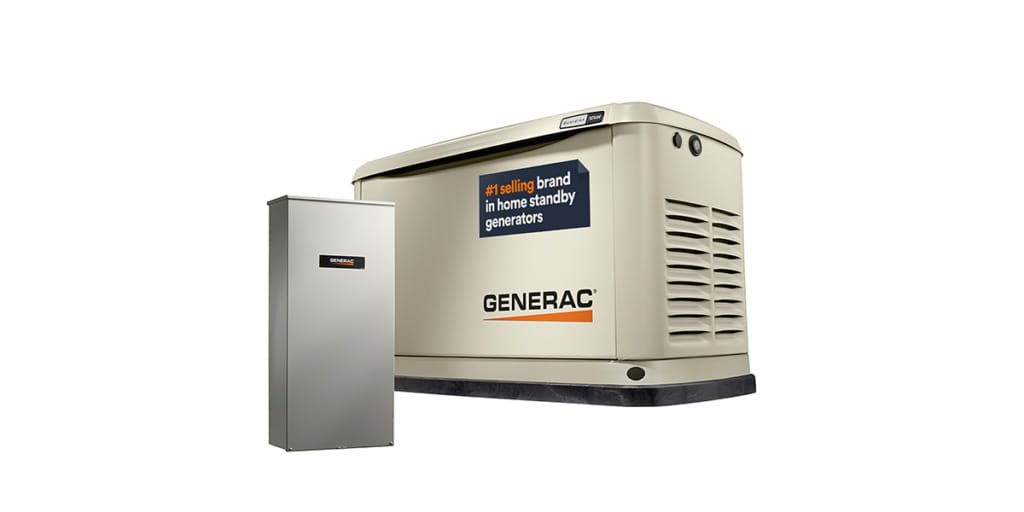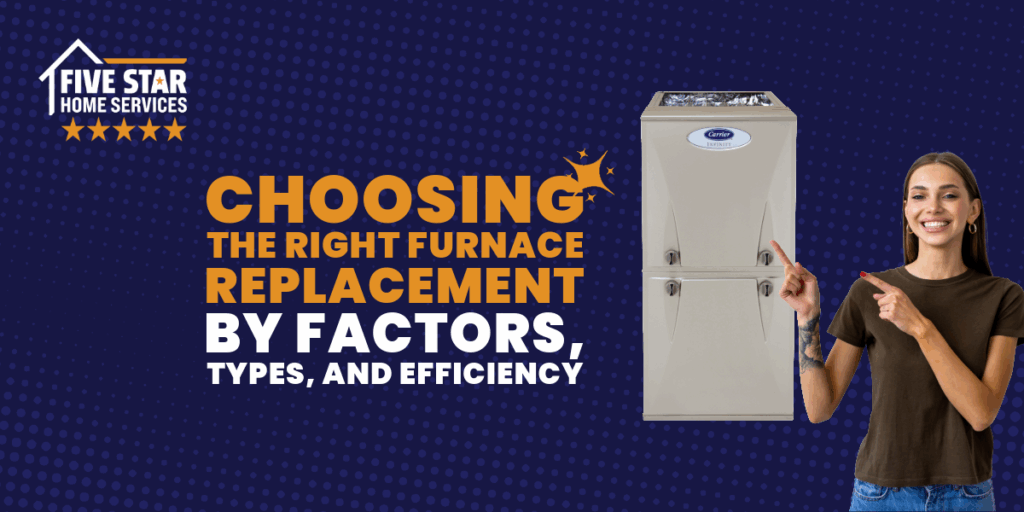Choosing the right furnace replacement for your home should be determined by 3 factors: your home, your comfort concerns, and your budget. We know that determining what type of home heating system is right for you can be tricky. Each option brings new technical jargon and figures, and after a while, even the model names run together.
No worries though! We are here to help you get a better grasp of what this technical terminology means for you and your home. As your local home comfort experts, we can honestly say there isn’t a single, one-size-fits-all home heating solution. Still, we’ll help you find the right fit.
The 3 Big Factors That Will Help You Choose the Best Furnace for Your Home
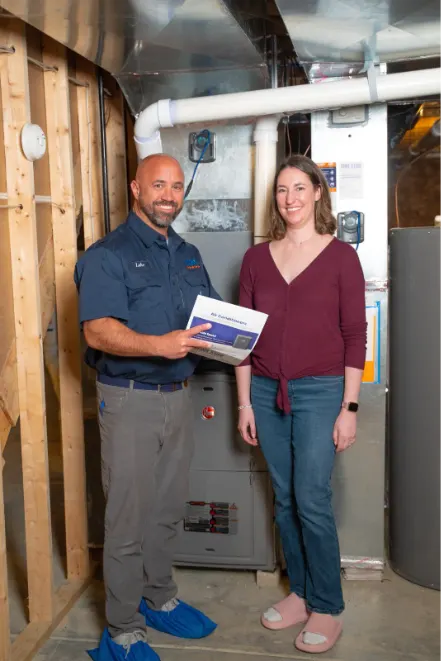
Your home, your comfort concerns, and your budget are all things that must be considered when looking for a new furnace for your home. Let’s talk about why.
1. Proper Furnace Sizing for Your Home
Step one is determining what size your system must be to heat your home adequately. Every type of HVAC system requires in-depth measurements to match your home. It’s not enough to only base the size of a furnace on your home’s square footage.
For example, at Five Star Home Services, we use a Load Calculation to size the systems we install. Both the U.S. Department of Energy (DOE) and the Air Conditioning Contractors of America (ACCA) state that contractors should use a load calculation, like Manual J to size residential systems.
A Load Calculation requires a variety of parameters, including:
- The height of your ceilings
- The directions these windows face
- Your home’s total square footage
- How recently your attic was insulated
- How much insulation your siding provides
- Whether your home has a basement or a slab
- The number, size, type, and condition of your windows
The Cost of Improper Sizing
These are several of the parameters we at Five Star Home Services consider when sizing your home. Any HVAC contractor that fails to do so could cost you. You could end up paying more initially and in the long term. In short, bigger isn’t always better. This is because anything too big overheats the home and kicks on and off much more than it should. Now, on the flip side, anything too small will run longer and work harder than it should. You might also notice hot and/or cold spots in the home.
In both cases, improper sizing can drastically increase your energy bills; it can also cause unnecessary wear and tear on your HVAC system. This drastically shortens its lifespan by as much as 5 to 10 years.
2. Your Comfort Concerns and Heating Preferences
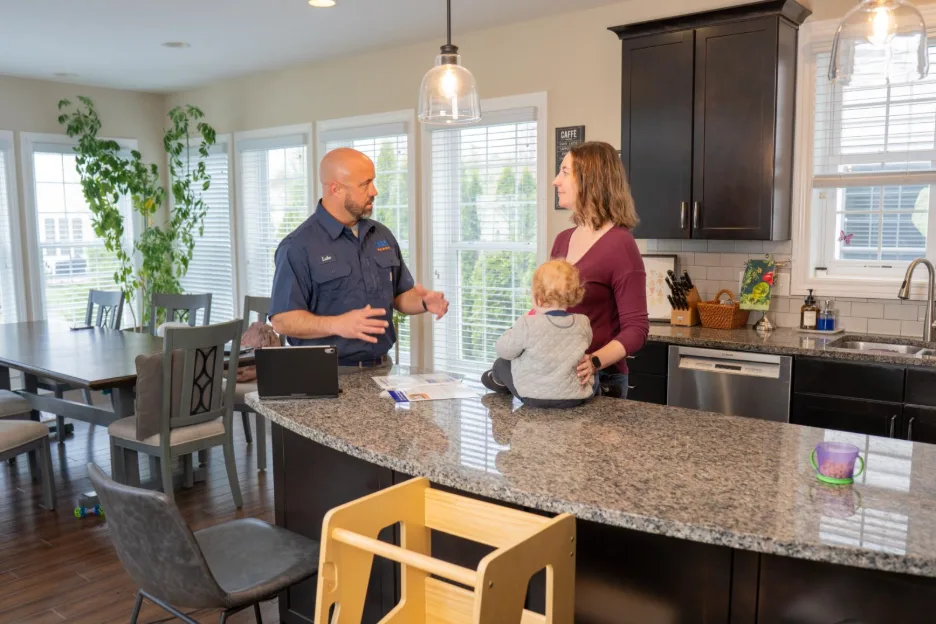
Preferences play another big role when choosing a furnace. You must look at your overall needs. These include your heating and cooling preferences. Comfort concerns include any issues you have with your current system, even if it’s running well.
Furnace replacement is an excellent opportunity to address any issues you have with your current system.
So, some concerns and other issues include the following:
- Noise
- Hot and cold spots
- Temperature spikes
- Expensive utility bills
Nevertheless, determining your comfort concern isn’t an industry standard. In fact, a lot of HVAC contractors skip this step, but at Five Star, your comfort concerns play a major role in determining which furnace is right for you. After all, we believe if you’re going to spend thousands of dollars, it should be on a system that keeps you comfortable.
When we understand your comfort concerns, we can better recommend products that meet your needs.
3. Your Budget and Long-Term Value
One thing to note is that a furnace replacement costs range anywhere between $3,000 and $11,000. This includes equipment costs, labor, and permit fees. However, it often does not account for any ductwork or ventilation modifications.
How Budget Impacts Your Options
Because there are multiple options for each budget, the size of the furnace and the comfort concerns it addresses greatly affect its price. Performing a load calculation and identifying your comfort concerns helps to determine the best option. Additionally, you need to figure out which option holds the most value for you. HVAC systems that have the potential to address more comfort concerns will have higher initial costs. Based on your budget, you will probably need to prioritize some of your comfort concerns.
Read more about what to expect cost-wise in Part 3 our Furnace Buying Guide here!
The Different Types of Furnaces: Gas vs. Electric
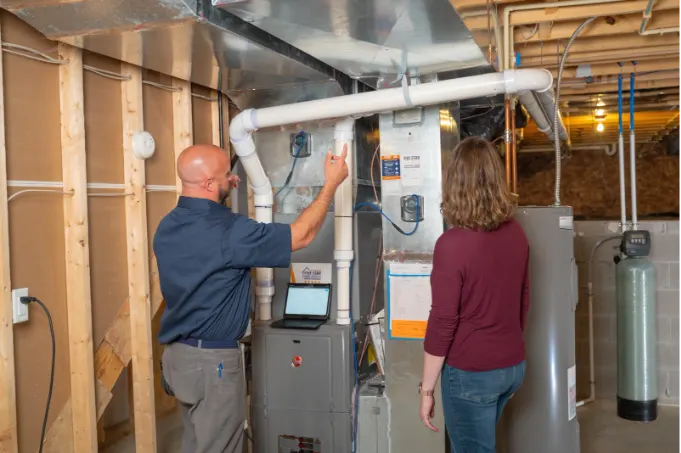
Gas versus electric? What’s better? Well, it all depends on your home needs.
1. Gas Furnaces
Gas furnaces are a popular option among homeowners because of their high efficiency and lower operating costs. They use natural gas or propane to generate heat, which is then distributed throughout the home via ductwork.
Benefits of Gas Furnaces:
- Varying efficiency capabilities
- Faster heating throughout the home
- Lower fuel costs compared to oil or electricity
- Consistent heating and temperature control, especially in colder climates
- Inexpensive to maintain and can last twice as long as electric heat pumps
Drawbacks of Electric Furnaces:
- Higher operational costs
- Slower to heat a home compared to gas furnaces
- They emit dry heat, which can dry out the air in the winter
2. Electric Furnaces
Electric furnaces are another popular option for some homeowners, especially in Ohio, where they are known for being efficient, reliable, and easy to install. Using an electric heating element to warm the air, electric furnaces blow heat into your home. They are usually more affordable to install but can be more expensive due to higher electricity costs.
Benefits of Electric Furnaces:
- Easy maintenance
- Lower installation cost
- Safer as there’s no combustion process
- Newer models can improve indoor comfort
Drawbacks of Electric Furnaces:
- Higher operational costs
- Slower to heat a home compared to gas furnaces
- They emit dry heat, which can dry out the air in the winter
How Furnaces Operate: Single-Stage, Two-Stage, Variable-Speed
Not all furnaces run the same way. Beyond choosing between a gas or electric furnace, you’ll also need to decide how your furnace cycles and delivers heat.
1. Single Stage Furnaces
Single-stage furnaces operate on a simple on/off mechanism. When the thermostat detects that the indoor temperature is below the desired set point, the furnace kicks on at full capacity to raise the temperature. Once that desired temperature is achieved, the unit shuts off completely upon completing its cycle.
Benefits of Single-Stage Furnaces:
- Simplicity: With fewer components, single-stage furnaces are easier to operate and maintain.
- They’re Cost-Effective: Usually, single stage furnaces are the most affordable option, both in terms of initial cost and overall maintenance.
Drawbacks of Single-Stage Furnaces:
- Efficiency: Since the furnace only operates at full capacity, it can lead to uneven heating and higher energy consumption.
- Comfort: The on/off cycle can create noticeable temperature swings, resulting in uneven heating where some rooms feel too hot or too cold.
- More Wear and Tear: Single-stage furnaces develop more wear and tear over time.
- Noise: Single-stage furnaces can make more noise when they turn on or off, and sometimes during regular operation.
2. Two Stage Furnaces
Two stage furnaces offer homeowners more flexibility than a single stage unit. These models operate at two different levels of heating production, high and low. Typically, the furnace runs on the lower setting to maintain a consistent temperature. It switches over to the higher setting only when necessary.
Benefits of Two-Stage Furnaces:
- Equipment Longevity: Because two-stage furnaces don’t work as hard, they often last longer than other types of furnaces which saves you money in many ways.
- Enhanced Efficiency: By operating at a lower setting much of the time, two stage furnaces consume less energy.
- Enhanced Comfort: These furnaces provide more even heating while reducing temperature fluctuations. Their lower setting allows the furnace to run longer, increasing air circulation.
- Less Noise: Running on a lower setting also means the furnace is generally quieter.
Drawbacks of Two-Stage Furnaces:
- Higher Initial Cost: Although they offer better efficiency, two-stage furnaces are more expensive upfront to install.
3. Variable-Speed Furnaces
Among the three modes, variable-speed or modulating furnaces stand out for their performance. These furnaces take comfort and efficiency to the next level. Unlike single- and two-stage furnaces, variable-speed systems can adjust the blower motor speed to control airflow precisely and modulate the gas pressure to maintain a constant and consistent temperature.
Benefits of Variable Speed Furnaces
- Maximum Energy Efficiency: These home heating systems optimize energy usage by adjusting speed and output based on real-time needs.
- Superior Indoor Comfort: Variable-speed furnaces provide the most consistent temperature control, drastically reducing hot and cold spots to ensure even heating throughout the home.
- Improved Indoor Air Quality: The continuous operation at variable speeds helps improve indoor air quality by constantly filtering the air.
- Quieter Operation: Variable-speed motors ramp up to full speed gradually rather than suddenly, whereas traditional furnaces’ sudden starts are usually noisy.
- Lower Maintenance Costs: Surprisingly, variable-speed furnaces are cheaper to maintain than traditional furnaces.
Drawbacks of Variable Speed Furnaces
- Higher Cost Upfront: These are the most expensive type of furnace to purchase and install.
- Professional Installation a Must: Variable-speed furnaces may also cost more to install. Because of their complexity, it is important to choose a reputable contractor to set up the furnace controls.
If you’re an Ohio homeowner, make the leap and start your furnace replacement chapter by clicking here!
Furnace Efficiency: Understanding AFUE and High-Efficiency Furnaces
Once you know the size, type, and style of furnace that fits your home, the next step is understanding AFUE ratings and efficiency.
What AFUE Ratings Mean
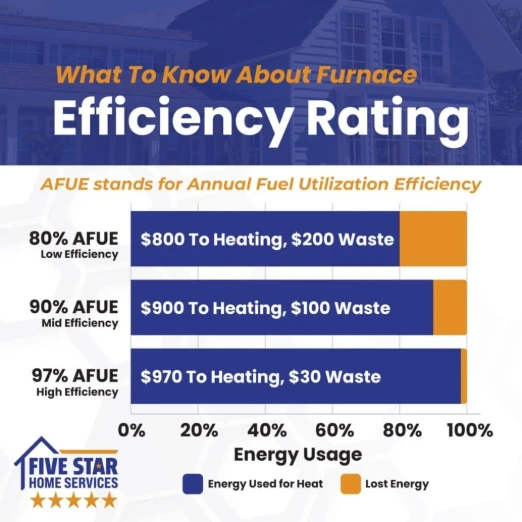
When shopping for a furnace replacement, efficiency is one of the most important factors to consider. Furnace efficiency is measured by its Annual Fuel Utilization Efficiency (AFUE) rating. AFUE tells you how much of the fuel used is actually converted into heat for your home.
For example, a furnace with an 80% AFUE rating uses 80% of the fuel to produce heat, while the other 20% is lost through exhaust. A higher AFUE rating means greater efficiency, lower energy bills, and reduced environmental impact.
- 80% AFUE (standard efficiency): Common in older furnaces; less efficient and more costly to run.
- 90–98% AFUE (high efficiency): Found in modern condensing furnaces; minimizes fuel waste and maximizes heating output.
How High-Efficiency Furnaces Work
High-efficiency furnaces (90% AFUE or higher) take efficiency to the next level by using advanced technology to capture more heat from combustion gases. They typically include a secondary heat exchanger that extracts additional heat before exhaust leaves the system.
Many high-efficiency furnaces also feature sealed combustion, which pulls air from outside the home rather than from inside. This not only saves energy but also improves safety by reducing the risk of backdrafting.
Key benefits of a high-efficiency furnace:
- Lower monthly utility bills
- Consistent and reliable indoor comfort
- Reduced carbon footprint
- Longer equipment lifespan when properly maintained
Although high-efficiency models have a higher upfront cost, they often pay for themselves over time through energy savings and improved comfort.
Next Steps for Columbus, Dayton, and Cincinnati Homeowners
Now that you know what factors affect your final decision in choosing a furnace, what different types of furnaces there are, the different stages, and efficiency basics, you are well on your way to making the best informed-decision for your home and your family.
If you’re looking for the best furnace replacement in Columbus, Dayton, or Cincinnati, let Five Star Home Services help you find the system that fits your home, your comfort concerns, and your budget. You can contact Five Star Home Services at (833) 405-8009 or book your own appointment online for a free estimate today!
FAQ’s
What size furnace do I need for my home?
The right furnace size depends on more than square footage. A proper Manual J Load Calculation considers insulation, window placement, ceiling height, and more. Choosing the right size prevents hot and cold spots, higher bills, and premature system wear.
Is a high-efficiency furnace worth the cost?
Yes, for most homeowners. High-efficiency furnaces (90%+ AFUE) lower monthly utility bills, improve indoor comfort, and reduce your carbon footprint. While they cost more upfront, they often pay for themselves in long-term savings.
What’s the difference between single-stage, two-stage, and variable-speed furnaces?
Single-stage furnaces run on full power only, making them affordable but less efficient. Two-stage furnaces have high and low settings for more even heating. Variable-speed furnaces adjust airflow and heat output in real time, offering the best efficiency and comfort but at a higher upfront price.

